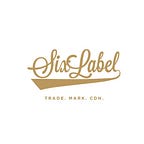Introduction:
In the realm of B2B e-commerce, the notion of “judicious use” finds its counterpart in the concept of Minimum Order Quantity (MOQ). Much like conserving energy or water, MOQ dictates the minimum number of units a customer must purchase in a single order. This fundamental element holds immense significance, directly influencing a company’s profitability, inventory control, and customer relations.
This blog navigates the complexities of MOQ, unraveling its advantages, hurdles, and effective strategies for its optimization.
Benefits of Implementing an MOQ:
1. Improved Profitability:
Increased Sales Revenue: Businesses can encourage customers to purchase more products by setting a minimum order quantity, resulting in higher sales revenue.
Reduced Costs: With larger orders, businesses can benefit from economies of scale, lowering production and shipping costs.
2. Efficient Inventory Management:
Optimized Storage: MOQs help businesses maintain an optimal level of inventory by preventing overstocking of slow-moving products.
Reduced Warehousing Costs: By minimizing the number of small orders, businesses can reduce their warehousing costs associated with handling and storing a large number of items.
3. Enhanced Customer Satisfaction:
Streamlined Order Processing: MOQs streamline the order processing system, reducing the likelihood of errors and delays, and ultimately improving customer satisfaction.
Reduced Shipping Fees: Customers may be eligible for reduced shipping fees or free shipping when they meet the minimum order quantity, which enhances customer satisfaction and encourages repeat business.
Challenges Associated with MOQ:
1. Potential Loss of Customers:
Restricting Sales:
Implementing an MOQ may deter certain customers who prefer to make smaller purchases, potentially leading to lost sales.
Limited Accessibility:
For customers with limited budgets or businesses requiring smaller quantities, MOQs can create a barrier to entry.
2. Increased Inventory Risk:
Overstocking: Setting an excessively high MOQ can result in overstocking of slow-moving products, tying up capital and leading to potential losses.
Reduced Product Variety: High MOQs may limit the variety of products offered, as businesses prioritize products with higher demand and lower MOQs.
3. Complexities in Shipping and Logistics:
Shipping Constraints: MOQs can pose challenges in terms of shipping and logistics, particularly for international orders or products with specific shipping requirements.
Increased Shipping Costs: For customers who require smaller quantities, meeting the MOQ may result in higher shipping costs, potentially offsetting the benefits of the MOQ.
Strategies for Optimizing Minimum Order Quantity:
1. Data-Driven Approach:
Analyze Sales Data: Analyze historical sales data to identify products with high demand and those with low sales velocity. Set different MOQs for different products based on their demand patterns.
Customer Segmentation: Segment customers based on purchase behavior, order size, and industry. Tailor MOQs to cater to the specific needs and preferences of each customer segment.
2. Flexible MOQ Structure:
Tiered MOQs: Implement tiered MOQs, offering different minimum order quantities for different product categories or order values. This approach allows businesses to cater to customers with varying needs while maintaining profitability.
Seasonal Adjustments: Adjust MOQs based on seasonal demand fluctuations. During peak seasons, consider lowering MOQs to capture increased demand, and during off-seasons, raise MOQs to maintain inventory efficiency.
3. Clear Communication and Transparency:
Communicate MOQ Policies:
Communicate MOQ policies on the website, product pages, and checkout process. Ensure that customers know the minimum order quantity requirement before placing an order.
Offer Alternatives:
Provide alternative options for customers who cannot meet the MOQ. This could include offering smaller pack sizes, creating sample packs, or directing them to authorized distributors.
4. Optimize Shipping and Logistics:
Negotiate Shipping Rates: Negotiate favorable shipping rates with carriers to minimize the impact of MOQs on shipping costs. Consider offering free shipping or discounted shipping for orders above a certain threshold.
Explore Alternative Shipping Methods: Explore alternative shipping methods, such as drop shipping or third-party logistics (3PL) providers, to reduce shipping costs and improve delivery times.
Conclusion:
Minimum order quantity (MOQ) is a crucial aspect of B2B e-commerce that can significantly impact a company’s profitability, inventory management, and customer satisfaction. By carefully considering the benefits, challenges, and optimization strategies discussed in this SEO blog, businesses can establish an appropriate MOQ that maximizes their sales, minimizes risks, and enhances customer experiences. Understanding the nuances of MOQ and implementing data-driven strategies will enable businesses to strike a balance between profitability and customer satisfaction in the ever-evolving digital landscape.
